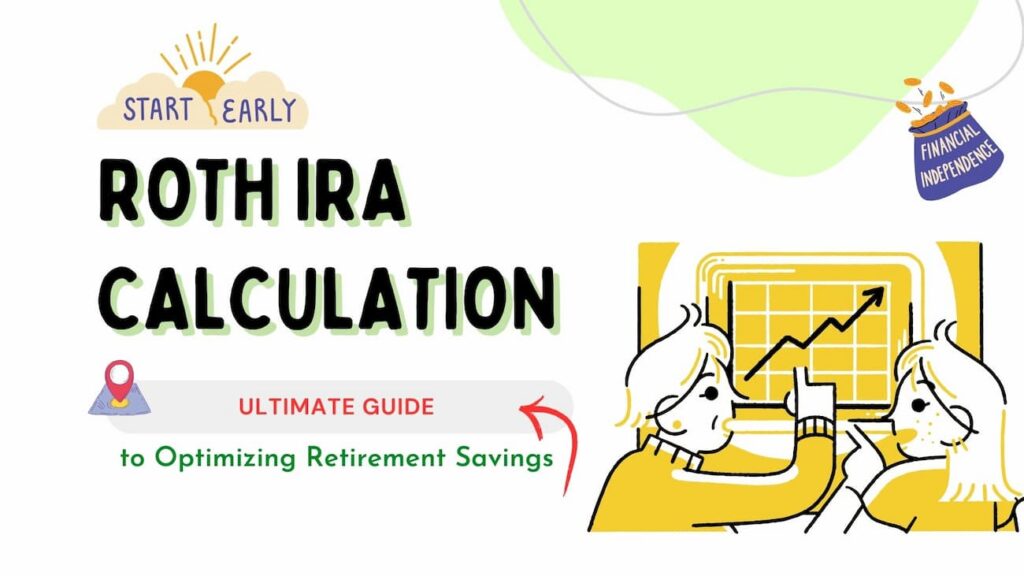The Retirement Alchemist: Transforming Your Roth IRA Calculation into a Gold Mine 🪙
Whether retirement is 10 years away, or it feels like a distant dream, a Roth IRA can be a fantastic tool to build your wealth. Yet, many don’t know the full potential of this powerful vehicle. With the right strategies and understanding of Roth IRA calculations, you can optimize your retirement savings like a pro.
In this article, we will demystify Roth IRAs, explain how to calculate contributions, distributions, and conversions, and share expert tips for turning your Roth IRA into a financial goliath. Get ready to transform mundane numbers into a retirement treasure!
🌅Rise of the Roth IRA
Over the last few years, Roth IRAs have moved from being a niche choice for retirement savers to one of the most popular. But why is the Roth IRA capturing the attention of so many?
🌟Advantages of a Roth IRA
The Roth IRA is a unique retirement savings account with several key benefits:
- Tax-free distributions: Unlike a traditional IRA, Roth IRAs provide tax-free distributions in retirement. This means more money for you when it matters most.
- Flexible withdrawals: With a Roth IRA, you can withdraw your contributions (not earnings) at any time and for any reason, without paying taxes or early distribution penalties.
- No Required Minimum Distributions (RMDs): Unlike other retirement accounts like a 401(k) or traditional IRA, a Roth IRA doesn’t require you to start taking distributions at a certain age.
These benefits explain the rising popularity of the Roth IRA. But to unlock its potential, understanding the nuts and bolts of Roth IRA calculations is key.
♟️ Playing by the Rules: Roth IRA Eligibility and Contribution Limits
While anyone with earned income can contribute to a traditional IRA, Roth IRAs come with eligibility criteria based on your Modified Adjusted Gross Income (MAGI).
✅Roth IRA Income Limits
For 2024, the IRS has certain income limits for contributing directly to a Roth IRA:
- For single filers, the MAGI must be less than $146,000 to contribute the maximum, and less than $161,000 to contribute at all.
- For married couples filing together, the MAGI must be less than $230,000 to contribute the maximum, and less than $240,000 to contribute at all. Knowing these limits can help you plan your contributions strategically.
✅Roth IRA Contribution Limits
The maximum amount you can contribute to a Roth IRA also depends on your age:
- If you are under 50, you can contribute up to $7,000 in 2024.
- If you are 50 or older, you can use the “catch-up” provision and contribute up to $8,000.
📌Understanding Roth Conversions
Even if your income exceeds the limit for Roth IRA contributions, you can still contribute to a traditional IRA and then convert those funds over to a Roth IRA. This is known as a Roth Conversion. However, it’s critical to calculate the potential tax implications before initiating a Roth Conversion.
🙅♂️Roth Conversion Tax Implications
Converted amounts will be included in your income and be subject to federal and possibly state income taxes. However, once the money is in the Roth IRA, future earnings will grow tax-free.
Here are some considerations that could help you decide if a Roth Conversion is right for you:
- Anticipated tax bracket at retirement: If you expect to be in a higher bracket upon retirement, paying taxes now could be beneficial.
- The availability of money to pay the income tax due upon conversion: If you can pay this out-of-pocket (and not from your retirement contributions), you’ll maximize the benefits.
📌Decoding Roth IRA Distributions
Assuming you reach 59.5 years of age and your Roth IRA has been open for at least five years, you can withdraw both contributions and earnings tax-free. However, if you don’t meet these conditions, you may have to pay taxes and penalties on your distributions.
Proper calculation and understanding of these rules can help prevent an unwelcome tax bill.
🙅♂️Early Withdrawal Penalties
If you withdraw earnings before age 59.5 and your Roth IRA has been open less than five years, you’ll likely owe income tax and a 10% early withdrawal penalty. However, there are exceptions for certain expenses like a first-time home purchase, education costs and certain medical expenses.
🏃♂️Conclusion: The ROTH Power
In conclusion, a Roth IRA is a powerful tool for retirement savers. Understanding its calculations and rules can help you optimize your savings. Whether it’s strategizing contributions, calculating conversions, or decoding distributions, a Roth IRA can be your gold mine. Ready to take the next step? A trusted financial advisor can guide you along the way.
“The Roth IRA is a gold mine for retirement savings. Know the rules, do the math, enjoy the harvest!”
- An Early Investor Tweet
Don’t underestimate the magic of Roth IRA calculations, it could transform your mundane numbers into a powerful retirement treasure!
Sources:




